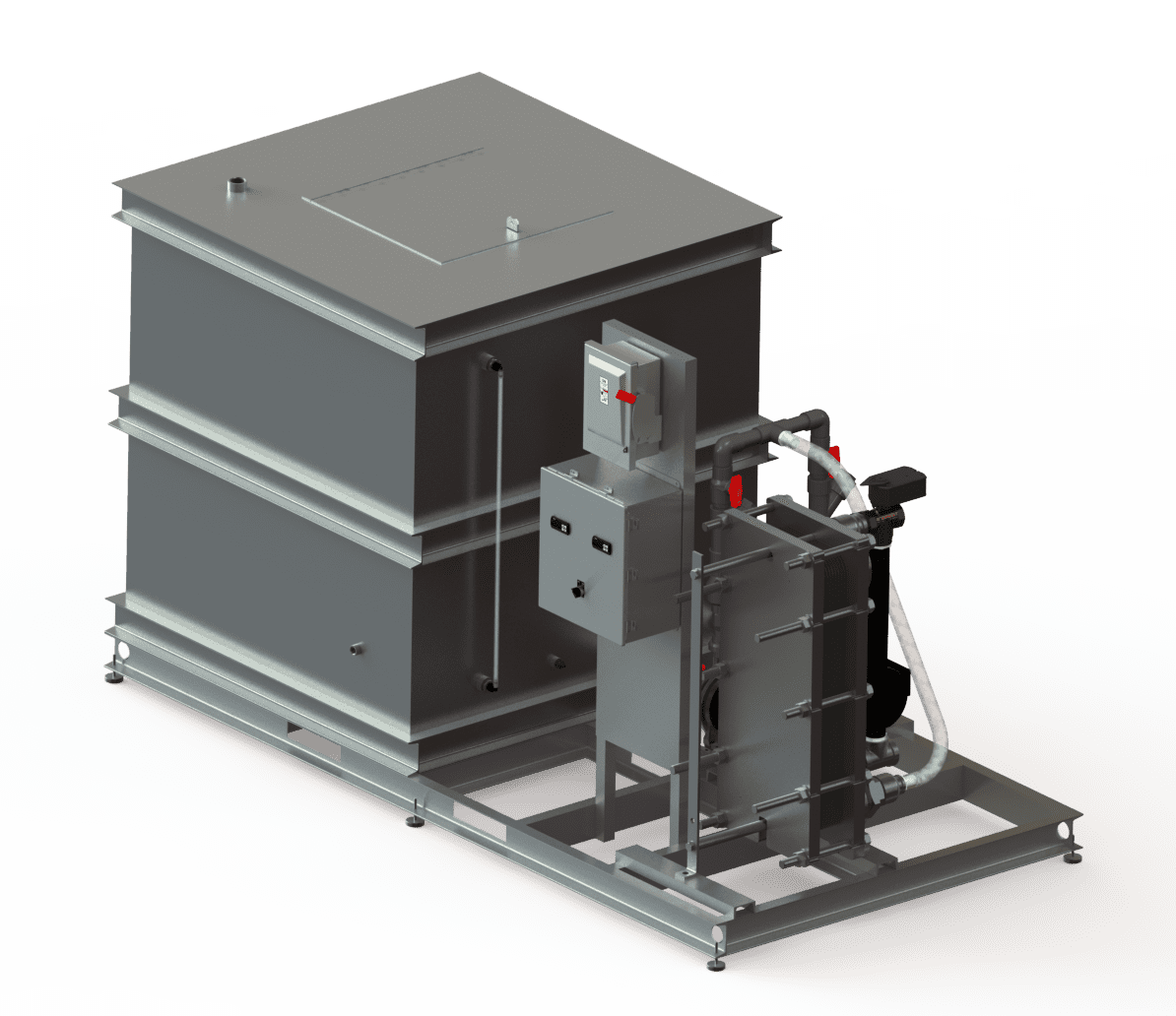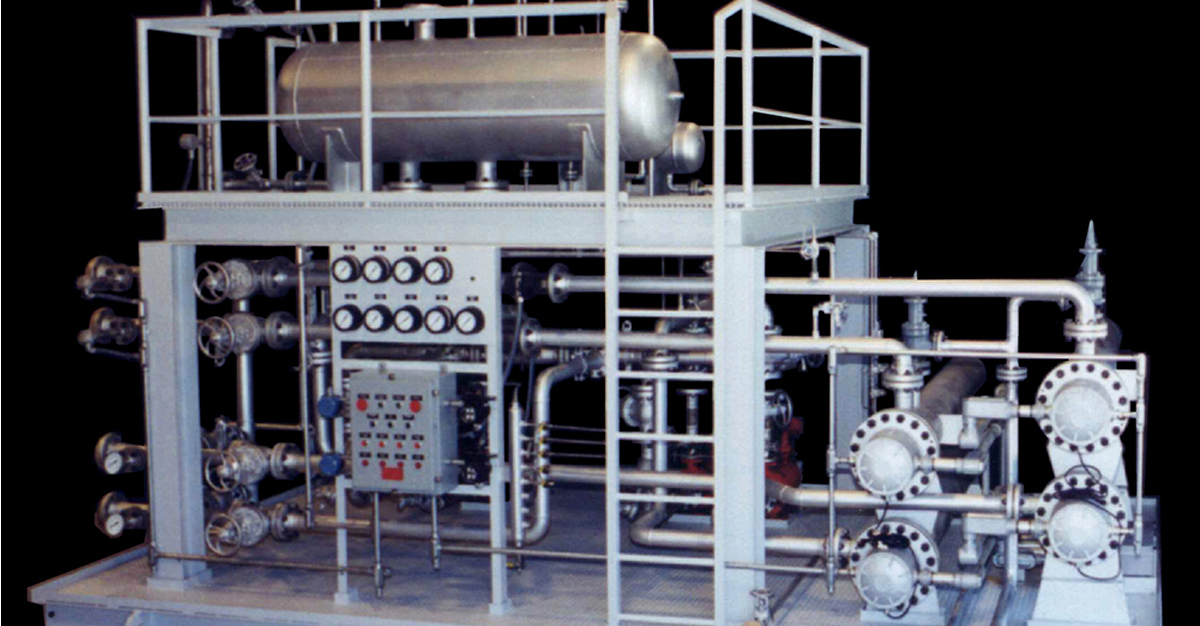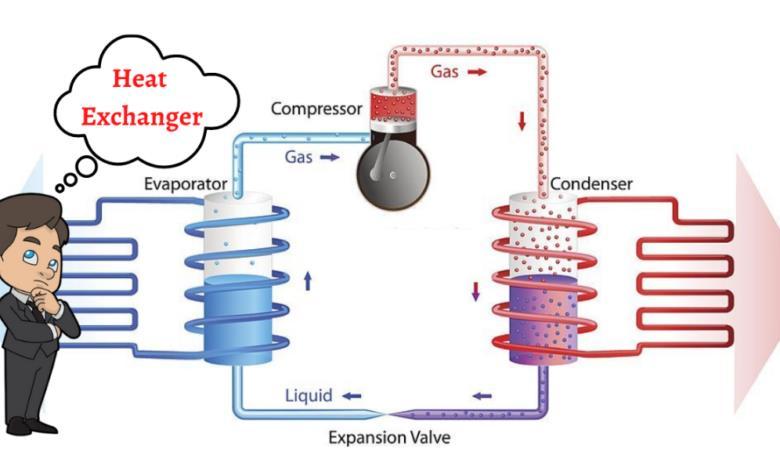A Comprehensive Guide to Selecting the Right Heat Transfer Systems for Your Requirements
Selecting the appropriate Heat transfer system is important for functional performance. Various systems deal with various needs, affected by aspects such as temperature level variety and liquid type. Recognizing the concepts behind Heat transfer, such as radiation, transmission, and convection, is essential. Furthermore, evaluating power sources and maintenance practices can impact long-lasting efficiency. A closer assessment of these factors to consider exposes exactly how to tailor a system to details demands. What should one prioritize in this complicated decision-making procedure?
Understanding Heat Transfer: Key Principles and Principles
Heat transfer might appear like an uncomplicated concept, it incorporates a range of principles that are fundamental for efficient system layout - DVS Heat Transfer Systems. Understanding these concepts is essential for developers and engineers that intend to enhance thermal performance in various applications. Transmission, for circumstances, involves the transfer of Heat through strong materials, while convection refers to the activity of Heat within liquids. Radiation, one more key principle, defines just how Heat can be moved through electro-magnetic waves. Each of these systems plays a crucial function in determining exactly how energy relocates within a system. By completely understanding these ideas, experts can make informed choices, making sure that Heat transfer systems operate successfully and satisfy the particular demands of their applications
Kinds Of Heat Transfer Solutions: An Overview
Comprehending the concepts of Heat transfer prepares for exploring the different kinds of Heat transfer systems readily available. Heat transfer systems can be classified mostly right into three types: convection, radiation, and transmission. Conduction involves Heat transfer via solid products, depending on straight call between bits. Convection, on the various other hand, happens in fluids (liquids and gases) where the movement of the fluid itself promotes Heat transfer. Radiation entails the transfer of Heat with electromagnetic waves and does not require a tool, allowing it to happen in a vacuum cleaner. Each sort of system has unique characteristics and applications, making it vital for people and companies to meticulously assess their specific needs when selecting one of the most appropriate Heat transfer solution.
Applications of Heat Transfer Solutions in Numerous Industries
Heat transfer systems play a crucial role throughout different industries, affecting effectiveness and item top quality. In commercial production procedures, they assist in exact temperature control, while in food and beverage processing, they ensure security and conservation. Additionally, a/c and environment control systems rely greatly on reliable Heat transfer to keep comfortable settings.
Industrial Manufacturing Processes

Numerous commercial production processes rely greatly on effective Heat transfer systems to make best use of efficiency and enhance product quality. In markets such as metalworking, Heat exchangers play a necessary duty in keeping optimal temperature levels during welding, spreading, and creating. These systems guarantee uniform Heat circulation, which is essential for attaining preferred product properties. Likewise, in the chemical manufacturing industry, Heat transfer systems facilitate accurate temperature control during reactions, impacting return and security. In fabric manufacturing, effective Heat management is important for dyeing and ending up procedures, influencing shade uniformity and material quality. By choosing proper Heat transfer modern technologies, manufacturers can enhance power effectiveness and decrease functional costs, ultimately bring about a much more sustainable and competitive manufacturing environment.
Food and Drink Handling
Effective Heat transfer systems are similarly essential in the food and beverage processing market, where maintaining ideal temperatures is essential for food safety and top quality. These systems play a vital duty in processes such as pasteurization, sterilization, and food preparation, making certain that items are safe for consumption and preserve their dietary value. Heat exchangers, for example, successfully move Heat in between fluids, maximizing power use while minimizing temperature fluctuations. Furthermore, refrigeration systems are fundamental for preserving perishable products and expanding service life. The selection of Heat transfer modern technology directly influences operational performance and product integrity, making it crucial for food and beverage manufacturers to choose the ideal systems tailored to their certain processing needs. This careful selection eventually adds to customer complete satisfaction and food security.

Heating And Cooling and Environment Control
While many industries rely upon Heat transfer systems for effectiveness, A/C (Heating, Ventilation, and Air Conditioning) plays an essential duty in preserving interior environment control across numerous settings. These systems make use of Heat transfer principles to manage moisture, air, and temperature level quality, making sure comfort and safety and security in domestic, business, and commercial environments. Properly created HVAC systems enhance power effectiveness, minimize operational expenses, and decrease ecological influence. In business buildings, for instance, efficient environment control adds to employee productivity and client fulfillment. In industrial applications, a/c systems aid maintain suitable problems for equipment procedure and item conservation. Picking the ideal Heat transfer system is important for meeting details environment control requirements and attaining general system performance.
Evaluating Energy Resources for Heat Transfer Equipments
In evaluating energy resources for Heat transfer systems, a contrast of eco-friendly energy choices and fossil fuel considerations is important. Renewable resources, such as solar and wind, offer lasting choices that can reduce ecological impact. Conversely, fossil gas remain widespread because of their established framework and power density, motivating a mindful analysis of both options.
Renewable Resource Options

Nonrenewable Fuel Source Considerations
Examining important link nonrenewable fuel source factors discover this to consider is necessary for the efficiency and sustainability of Heat transfer systems. Nonrenewable fuel sources, such as gas, oil, and coal, are conventional power resources that give considerable Heat outcome, making them prominent selections for property and industrial applications. Nevertheless, their ecological effect, consisting of greenhouse gas discharges and source depletion, increases concerns. When selecting a warm transfer system, it is vital to analyze the accessibility, price, and governing variables connected with these gas. Furthermore, the effectiveness of nonrenewable fuel source systems have to be thought about, as higher effectiveness can minimize some environmental downsides. Inevitably, a well balanced approach weighing performance and sustainability can lead decision-makers towards the most suitable Heat transfer option for their specific demands.
Elements to Consider When Choosing a Warm Transfer System
Choosing an appropriate Heat transfer system requires careful factor to consider of different variables that can considerably influence performance and efficiency. One essential aspect is the operating temperature level range, which determines the materials and design suitable for the application. Furthermore, the sort of fluid used in the system-- whether gas or liquid-- affects Heat transfer effectiveness and compatibility. The system's size and ability must line up with the specific demands of the procedure to stay clear of inadequacies. Power resource schedule is additionally necessary, affecting operating expense and sustainability. The installation setting, including space constraints and ease of access for upkeep, plays a substantial function in system choice. Finally, regulatory conformity and security standards must be thought about to ensure the system fulfills all legal needs.
Maintenance and Efficiency Optimization for Heat Transfer Systems
Keeping Heat transfer systems is important for guaranteeing optimal performance and durability. Regular maintenance tasks, such as cleaning Heat exchangers and evaluating insulation, assistance stop effectiveness losses because of fouling and thermal linking. In addition, keeping track of system specifications, consisting of stress and temperature, permits very early detection of Go Here anomalies, decreasing downtime and pricey fixings. Implementing a preventative upkeep routine can enhance efficiency and prolong the life expectancy of elements. In addition, upgrading to advanced control systems can improve operational effectiveness by adjusting to differing problems and tons. By focusing on maintenance and effectiveness optimization, operators can accomplish lowered energy consumption, lower operational expenses, and enhanced overall system integrity, eventually resulting in much better resource utilization and an extra lasting operation.
Future Patterns in Heat Transfer Technologies
As markets significantly prioritize sustainability and power performance, future trends in Heat transfer technologies are set to undergo significant makeovers. Innovations such as innovative materials, consisting of carbon nanotubes and nanofluids, assure enhanced thermal conductivity and performance. Furthermore, the integration of sustainable energy sources right into Heat transfer systems is obtaining energy, promoting eco-friendly services. Smart innovations, consisting of IoT sensing units, are anticipated to transform monitoring and control, enabling real-time information evaluation for optimized efficiency. Additionally, the advancement of compact and modular systems will certainly facilitate simpler installation and maintenance, accommodating varied applications. These developments show a shift in the direction of even more lasting, reliable, and adaptable Heat transfer options, aligning with international power goals and environmental standards.
Often Asked Concerns
What Are the Ecological Effects of Heat Transfer Systems?
The environmental influences of Heat transfer systems can consist of greenhouse gas exhausts, power consumption, and potential thermal pollution. In addition, improper disposal of materials and inefficiencies can add to source depletion and environment disruption.
Just how Do I Calculate the Cost-Effectiveness of a Heat Transfer System?
To compute the cost-effectiveness of a heat transfer system, one need to evaluate first expenses, functional costs, upkeep needs, and energy efficiency, contrasting these aspects against the anticipated lifespan and efficiency of the system.
Can Heat Transfer Solution Be Used in Residential Setups?
Heat transfer systems can without a doubt be made use of in residential settings. They provide effective heating and cooling remedies, making homes extra comfy while potentially decreasing energy costs. Their convenience enables various applications in domestic settings.
What Safety Rules Put On Heat Transfer Solutions?
Safety and security policies for Heat transfer systems normally include guidelines on setup, procedure, and upkeep. Conformity with neighborhood building regulations, manufacturer specs, and sector requirements is important to assure efficient and risk-free system performance in different applications.
How Do Different Materials Affect Heat Transfer Performance?

Transmission, for circumstances, includes the transfer of Heat with solid products, while convection refers to the motion of Heat within liquids. Comprehending the principles of Heat transfer lays the foundation for checking out the various types of Heat transfer systems readily available. Heat exchangers, for circumstances, effectively transfer Heat in between liquids, maximizing power use while minimizing temperature changes. In evaluating power resources for Heat transfer systems, a comparison of sustainable power alternatives and fossil fuel factors to consider is vital. Steels, such as copper and aluminum, conduct Heat efficiently, whereas insulators like rubber and glass slow down Heat flow.